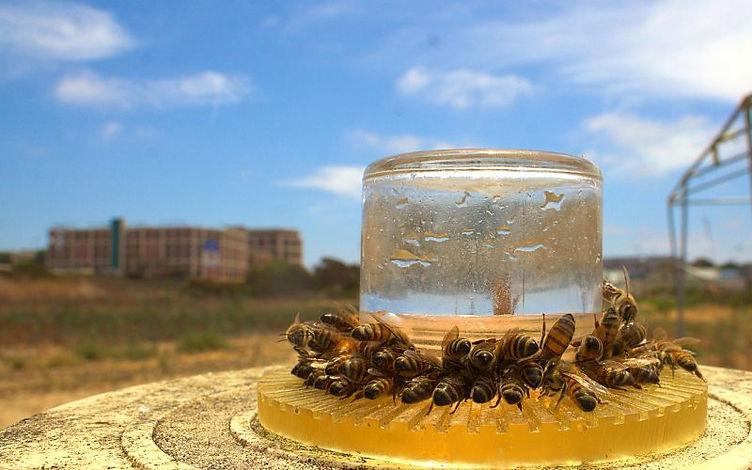How to Feed Honeybee Colonies in Winter Without Causing Moisture

Beekeeping in winter is a delicate balance between helping your bees survive and avoiding unintentional harm. One of the most common challenges beekeepers face during cold months is providing food without creating excessive moisture inside the hive. While bees need consistent nutrition when forage is scarce, moisture buildup can be deadly to colonies. Managing this balance requires preparation, careful feeding techniques, and the right protective gear.
Whether you’re a beginner or a seasoned beekeeper, having the right equipment—including high-quality beekeeping suits—ensures you can safely tend to your colonies even in freezing conditions. This guide will walk you through the best ways to feed honeybee colonies in winter while keeping moisture levels under control.
Why Feeding Honeybee Colonies in Winter Is Essential
During spring and summer, bees gather nectar and pollen in abundance. By winter, their stored honey is their primary food source. However, depending on the hive’s strength, weather patterns, and previous nectar flow, colonies sometimes run short of reserves before spring flowers bloom.
That’s when supplemental feeding becomes crucial. By offering sugar bricks, candy boards, or dry sugar, beekeepers ensure colonies stay strong enough to survive until warmer days return.
Performing winter checks requires not only careful timing but also safety measures. Bees can be more defensive when disturbed in colder months, which is why protective beekeeping clothing becomes an indispensable part of your toolkit.

Understanding the Moisture Problem in Winter Hives
Moisture is one of the biggest threats to honeybee colonies in winter. Here’s why:
-
Bees generate heat while clustering, and this warmth rises.
-
Warm air condenses on the colder inner surfaces of the hive.
-
The condensation drips down as water, soaking bees and creating damp conditions.
-
Wet bees cannot regulate their body temperature, leading to colony losses.
Excessive moisture kills more colonies than the cold itself. Proper ventilation, insulation, and careful feeding strategies can reduce condensation. When inspecting or adding feed, beekeepers should rely on durable bee suits for cold weather to avoid stings while working quickly.
The Best Feeding Methods for Winter Colonies
Feeding bees in winter differs from warmer months because liquid feed can cause more condensation and freeze inside the hive. Safer alternatives include:
1. Sugar Bricks
A dense block of hardened sugar placed on the top bars gives bees an emergency food source without adding moisture.
2. Candy Boards
These are trays filled with hardened sugar, sometimes with added pollen substitutes. They sit above the brood chamber and provide both food and insulation.
3. Dry Sugar Feeding
Loose granulated sugar can be poured onto newspaper on top of the frames. This method also absorbs some moisture from the hive, doubling as a preventive measure.
4. Pollen Substitutes
Though not always necessary in winter, they can help colonies stay strong, especially in early spring buildup.
Checking hives in cold conditions can be uncomfortable, but comfortable beekeeping gear helps you move efficiently and reduces stress for both bees and beekeeper.
Hive Ventilation: The Key to Preventing Moisture
Feeding is only half of the equation—moisture control depends heavily on ventilation. Beekeepers should consider:
-
Upper Entrances: Small openings allow moist air to escape.
-
Quilt Boxes: Boxes filled with wood shavings or absorbent materials placed on top of the hive soak up excess moisture.
-
Moisture Boards: These fiberboards absorb condensation and keep water away from the cluster.
-
Proper Insulation: Wrapping hives can conserve heat, but ventilation must always balance insulation to prevent trapped moisture.
By combining proper feeding with moisture management, colonies can overwinter successfully.
Step-by-Step Guide to Feeding Without Causing Moisture
-
Prepare Food Sources in Advance
Make sugar bricks or candy boards before temperatures drop. Having them ready saves time and prevents prolonged hive openings. -
Open Hives on Warmer Days
Choose sunny afternoons with milder temperatures to quickly add feed. -
Use Minimal Disturbance Techniques
Avoid prolonged inspections—lift the inner cover just enough to place food. -
Place Feed Above the Cluster
Position sugar or candy boards directly above the bees so they can access food easily without breaking cluster. -
Monitor and Adjust
Check periodically for consumption levels, but keep disruptions short.
Wearing premium beekeeping suits ensures you can handle these tasks with confidence, even in challenging weather.
Beekeeping Supplies and Equipment for Winter Care
Beyond food and ventilation, having the right beekeeping supplies makes winter management easier.
-
Feeding Equipment: Candy board frames, moisture boards, and quilt boxes.
-
Monitoring Tools: Hive scales, temperature monitors, and entrance reducers.
-
Protective Gear: Investing in high-quality beekeeping suits, gloves, and veils ensures safety throughout the season.
A reliable beekeeping supplier can help you source everything from feeding tools to reliable beekeeping suits designed to last through multiple seasons.
Safety Tips for Beekeepers in Winter
Working bees in cold weather comes with its own risks. Here are a few safety tips:
-
Dress in Layers Under Your Bee Suit: Winter beekeeping can be chilly, so wear thermal layers under your suit.
-
Protect Yourself from Defensive Bees: Bees disturbed in winter may be more aggressive, making high-quality beekeeping suits essential.
-
Use Durable Materials: Opt for durable bee suits for cold weather that resist wear and tear.
-
Choose Comfort: Comfortable beekeeping gear allows freedom of movement when feeding or checking colonies.
Affordable options are available for beginners, but professionals often prefer premium beekeeping suits for long-lasting protection.
Conclusion
Feeding honeybee colonies in winter without causing moisture is a balance between proper feeding strategies, moisture control, and beekeeper safety. By using sugar bricks, candy boards, and dry sugar instead of liquid feed, you provide essential nutrition without increasing condensation risks. Pairing these feeding methods with ventilation tools like quilt boxes and moisture boards ensures colonies remain healthy until spring.
Finally, don’t forget about your own protection. Investing in high-quality beekeeping suits and other protective gear not only keeps you safe from stings but also allows you to work confidently in harsh winter conditions.
For dependable equipment, trust a beekeeping supplier like Oz Armour, known for providing reliable beekeeping suits, gloves, and protective gear designed for comfort, durability, and year-round use.
With preparation, the right equipment, and safe practices, you can guide your colonies through winter successfully and look forward to strong, thriving hives in spring.





